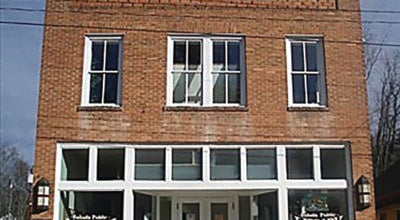St. Lukes purchases bone density machine, warns of osteoporosis
Published 6:42 pm Monday, July 26, 2010
Osteoporosis results in more than 1 million hip, spine, and wrist fractures annually. This disorder affects nearly one-half of all post menopausal women, the largest group at high risk for osteoporosis.
Osteoporosis is a silent disease until it is complicated by fractures fractures that can occur following minimal trauma, warns St. Lukes Hospitals Orthopaedic Surgeon Brian Rosenberg, MD. Osteoporosis can be prevented, and can be diagnosed and treated before any fracture occurs.
Osteoporosis, which literally means porous bone, is a disease in which the density and quality of bone are reduced. As the bones become more porous and fragile, the risk of fracture is greatly increased. The loss of bone occurs silently and progressively.
Everyone should know their risks for developing osteoporosis, encourages Sandra McCormack, MD. And anyone who is at risk for osteoporosis should have their bone density checked. A bone density test can be performed for patients who may have osteoporosis and is also useful to monitor the progression of osteoporosis and the response to treatment.
St. Lukes Hospital recently purchased a new bone density machine, the GE Prodigy Advance Full Scan. This machine provides fast scans detecting bone loss quicker and determining response to therapy sooner.
In just 30 seconds, this GE Prodigy Advance Full Scan highly precise densitometer helps to identify osteoporosis risk. It can also aid in determining the effects of osteoporosis treatment. In the past, osteoporosis could only be detected after you broke a bone. A bone density test makes it possible to know your risk of breaking bones before the fact.
Some people should be tested for osteoporosis at an earlier age. Knowing the signs to look for can help you understand when the time is right to have a bone density test. If you are ever unsure, you should discuss this with your doctor.
Dr. Rosenberg says the most common fractures associated with osteoporosis occur at the hip, spine and wrist. The incidence of these fractures, particularly at the hip and spine, increases with age in both women and men.
The good news is that osteoporosis is now a largely treatable condition and, with a combination of lifestyle changes and appropriate medical treatment, many fractures can be avoided.
Using a bone densitometer, physicians can measure patient bone density and follow it over time. If the patients bone density is low, or decreases at an abnormally fast rate, the patient may be at risk for osteoporosis. Through changes in diet, exercise habits and/or medication, further deterioration of bone can be prevented.
The National Osteoporosis Foundation recommends bone density testing if:
Youre a woman age 65 or older;
Youre a postmenopausal woman under age 65 with one or more risk factors for osteoporosis;
Youre a man age 70 or older;
Youre a man between age 50 and 70 with one or more risk factors for osteoporosis;
Youre older than age 50 and youve experienced a broken bone;
Youre a postmenopausal woman and youve stopped taking estrogen therapy or hormone therapy.
Research hasnt yet determined the optimal interval for repeat bone density tests, or the right age to stop testing. However, two or more years may be needed between tests to reliably measure a change in your bone density. Your doctor can recommend the best testing interval for you based on your personal medical history and osteoporosis risk factors.
For more information, or to schedule your bone density test, call St. Lukes Radiology at 828-894-3525, ext. 3590.





